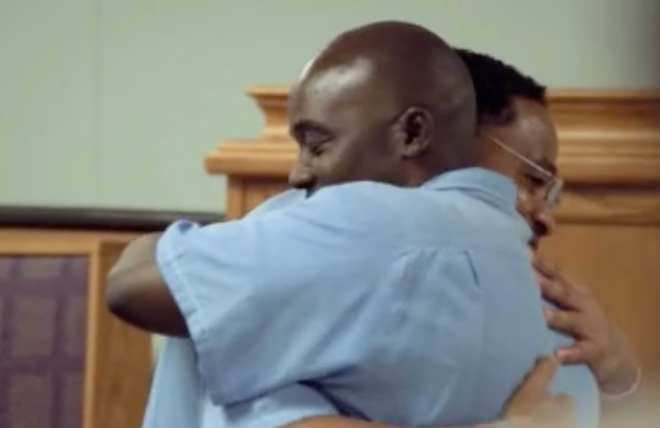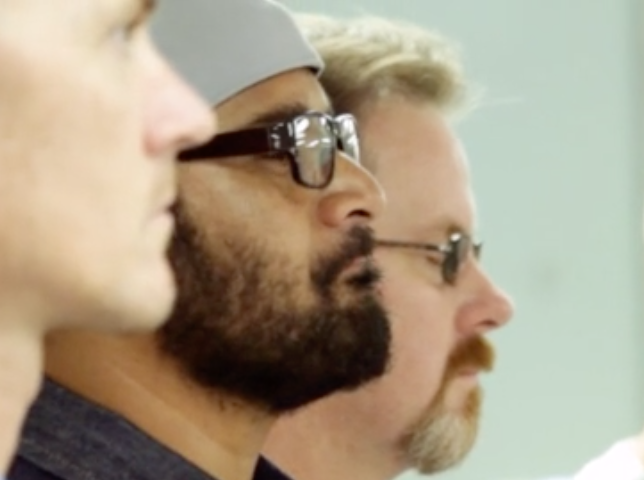GUIDING RAGE INTO POWER
What is GRIP?
The GRIP program has been developed over 25 years of direct work with thousands of incarcerated people, mostly people with violent offenses, and their victims/survivors. The program started at San Quentin State Prison and has grown to include Avenal State Prison, Mule Creek State Prison, Correctional Training Facility, and Deuel Vocational Institution. It offers an in-depth journey where the participants are able to understand and transform their violent behavior and replace it with an attitude of mindfulness and emotional intelligence.
This one-year program helps students comprehend the origins of their violence and develop the skills to track and manage strong impulses to avoid acting out in destructive ways. Students become “emotionally literate” by fully understanding feelings of anger and rage, learning to track the body signals that accompany those emotions, and engaging in a process to stop and discharge the buildup of tension in a safe manner. This program enables participants to identify and communicate the feelings that are masked by anger (such as sadness, fear, and shame) and process them. Students also develop the skills to understand and express the unmet needs that are covered up by the experience of rage.
The Four Elements of GRIP
1. Stop my violence/do no harm
2. Develop emotional intelligence
3. Cultivate mindfulness
4. Understand victim impact
Most rehabilitation programs singularly zero in on either academic, vocational purposes or addiction recovery. These are important efforts, yet they could be optimized if the root causes of what leads someone to offend were addressed directly. Our methodology consists of a transformational re-education modality that commits the participants to a process of deep self-inquiry and healing. The program examines the origins of criminogenic conduct and undoes the characteristic destructive behavioral patterns (including addiction) that lead to transgressions.

The program is a trauma-treatment-based model that integrates the latest brain research. One of the goals of the program is to heal the unprocessed pain from which people lash out. Participants partake in a process of creating an inventory of ‘unfinished business’ related to traumatic experiences that have become formative defense mechanisms and that generate triggered reactions. They also make a personal history of ‘violence suffered’ and ‘violence perpetrated’ to gain insight into origins and patterns of behavior. Each student signs a pledge to become a nonviolent person and a peacemaker; they graduate from being an offender to being someone dedicated to living a life of service.
A major component of the program is that it functions as a peer education model where experienced students co-facilitate the classes and mentor newer students. All participants become fully engaged as integral stakeholders of the program. The program employs a methodology called ‘normative culture’ wherein the students cultivate intrinsic motivation by being actively involved in both setting and enforcing the standards and norms that are integral to the course. This central value of the program ensures maximum ownership (‘the buy-in factor’) of the participants for their own learning process.

With its status as a service provider through Marin Probation Department, the program is certified to meet the needs of parolees who must take a 52-week, court-ordered domestic violence program before their release into the community. The program also is able to certify incarcerated people as facilitators of domestic violence prevention as a job skill.
The program integrates three didactical modalities: Instruction functions as a means to teach the information that is crucial to the program’s theoretical framework. Process refers to the various exercises employed to work with a deep layer of emotional material that must be acknowledged, expressed, and integrated in order for insight and understanding to occur. Practice anchors the acquired insights into durable behavior through learning how to embody what has been learned. Practicing the GRIP tools makes gained insight operational as a behavioral skill set.
GRIP: PEACE PLEDGE
GRIP Program:
An Excerpt of the Work in Action
Excerpt from “Leaving Prison Before You Get Out”
